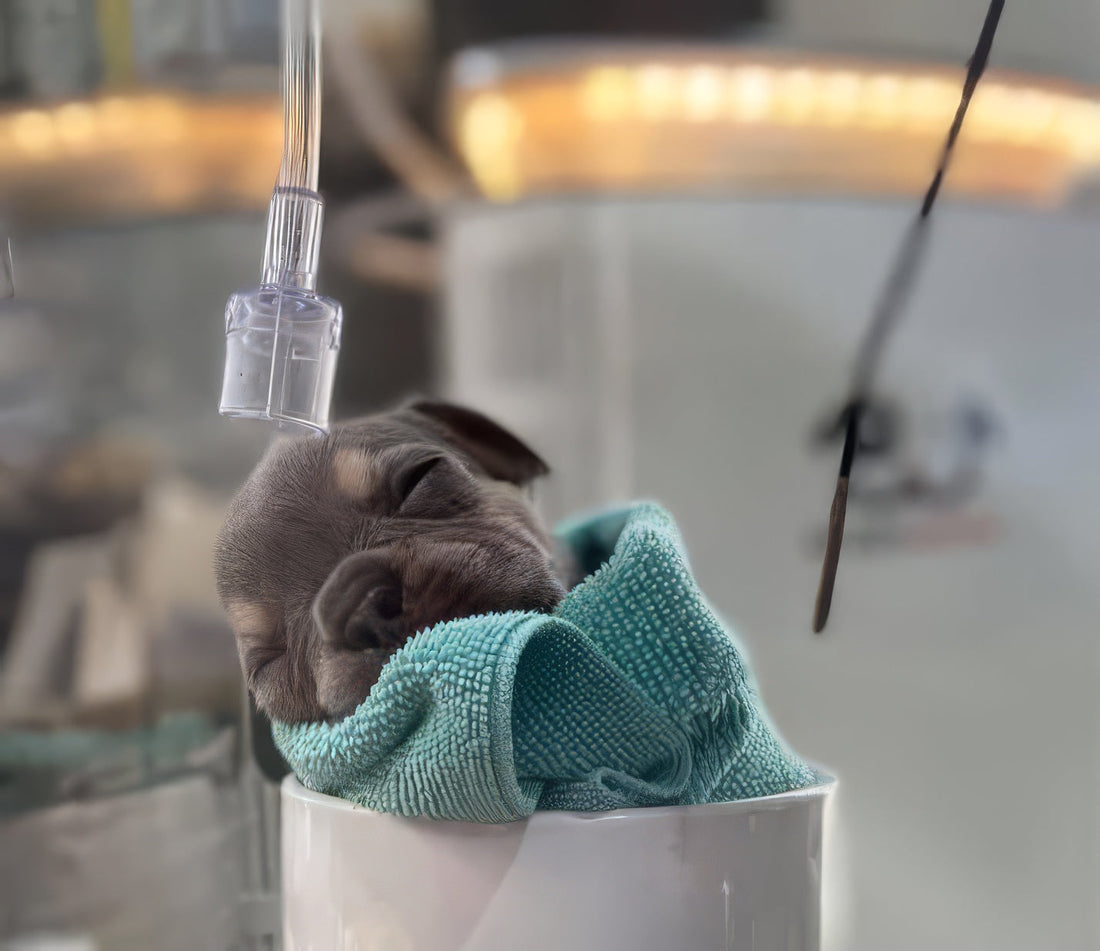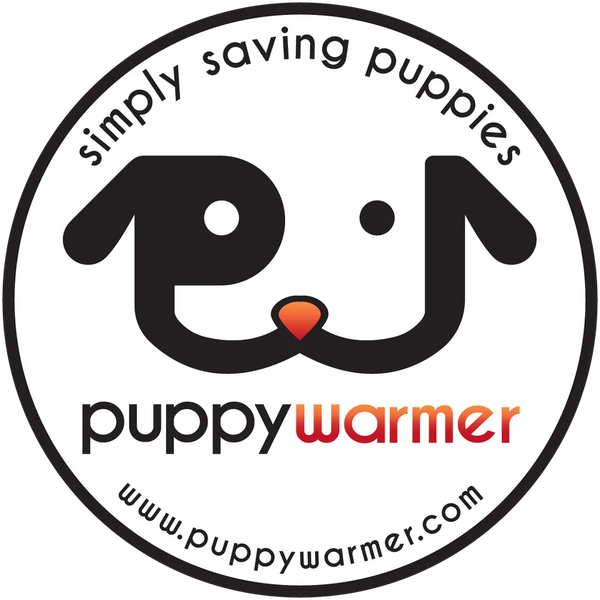
Bacterial Pneumonia in Newborn Puppies: Causes, Symptoms, and Treatment
Share
In the breeding community, the term “aspiration pneumonia” is often used when a puppy develops a lung infection from inhaled milk or formula. However, the correct term is bacterial pneumonia.
Why does this distinction matter? Because bacterial pneumonia and viral pneumonia require different treatments. Recognizing the cause quickly can make the difference between life and death for a fragile neonatal puppy.
How Puppies Develop Bacterial Pneumonia
The most common cause is milk aspiration. This happens when the dam’s milk—or a milk replacer—is delivered too quickly, faster than the puppy can swallow. Some of the milk may bubble near the nose, and with the puppy’s next breath, droplets enter the lungs.
Once inside, the milk spoils at body temperature, creating a breeding ground for bacteria. As bacteria grow, the puppy’s lungs lose efficiency, reducing oxygen delivery to the body. Think of the lungs as tiny sacs designed to process oxygen—when infected, those sacs simply can’t keep up.
Why Bacterial Pneumonia is a Serious Risk
Bacterial pneumonia is life-threatening in neonatal puppies. Breeders should be alert to these warning signs:
-
Lethargy or extreme fatigue
-
Poor feeding or refusal to nurse
-
Failure to gain weight
-
Crackling or rattling sound in the chest when breathing
If you see these symptoms, act immediately. This is not the time to try leftover medicines—time-sensitive, targeted treatment is essential.
Immediate Steps for Treatment
At Puppywarmer, we recommend this initial protocol while you prepare to contact your veterinarian:
-
Nebulize with saline for 5 minutes in an oxygen-rich environment.
-
Wait 60 minutes to allow the saline to loosen foreign material in the lungs.
-
Extract material with a bulb syringe or DeLee Mucus Trap.
-
Call your veterinarian during the waiting period. Share:
-
Symptoms you’ve observed
-
How often you noticed milk around the nose
-
Approximate time frame of these incidents
-
This information helps your vet determine whether your puppy’s condition is bacterial, viral, or another respiratory issue.
🔑 Remember: Bacterial pneumonia and viral pneumonia require different medications. Correct diagnosis ensures proper treatment.
Nebulization and Medicine Work Together
Nebulization alone is not enough—it supports but does not replace veterinary treatment. Typically, nebulization is repeated 4–6 times over a 24-hour period. Combined with the right medications, this approach helps puppies clear their lungs and recover faster.
Puppywarmer’s Recommended Tools
-
Puppywarmer Handheld Nebulizer: Unlike the nebulizer attachment that comes with the Oxygen Concentrator (which outputs air, not oxygen), the handheld nebulizer allows simultaneous nebulization and oxygen flow—crucial for puppies with bacterial pneumonia.
-
Puppywarmer Oxygen Concentrator: Provides a continuous supply of oxygen to strengthen struggling lungs.
Together, these tools help breeders create the optimal environment for recovery.
The Pup in a Cup Method
For advanced cases—where the puppy is extremely lethargic or distressed—many Puppywarmer users rely on the “Pup in a Cup” method.
Here’s how it works:
-
Place soft bedding inside a coffee cup (one you won’t use again).
-
Position the puppy upright in the cup to keep airways open.
-
Set the cup inside your Puppywarmer Incubator, in front of the handheld nebulizer and oxygen line.
-
Nebulize with saline for 5 minutes, then wait an hour before attempting foreign material extraction.
This upright positioning uses gravity to aid expectoration, making nebulization more effective for puppies with bacterial lung infections.
A Community Focused on Saving Puppies
This guide was developed by Ken Sunden, founder of Puppywarmer, with insights from breeders, rescues, and veterinarians who share one mission: saving at-risk puppies during their first weeks of life.
By combining veterinary care with the right tools and knowledge, breeders can give vulnerable puppies a fighting chance.
👉 Puppywarmer incubators, oxygen concentrators, and handheld nebulizers are designed to create the safest, most effective environment for neonatal recovery.
